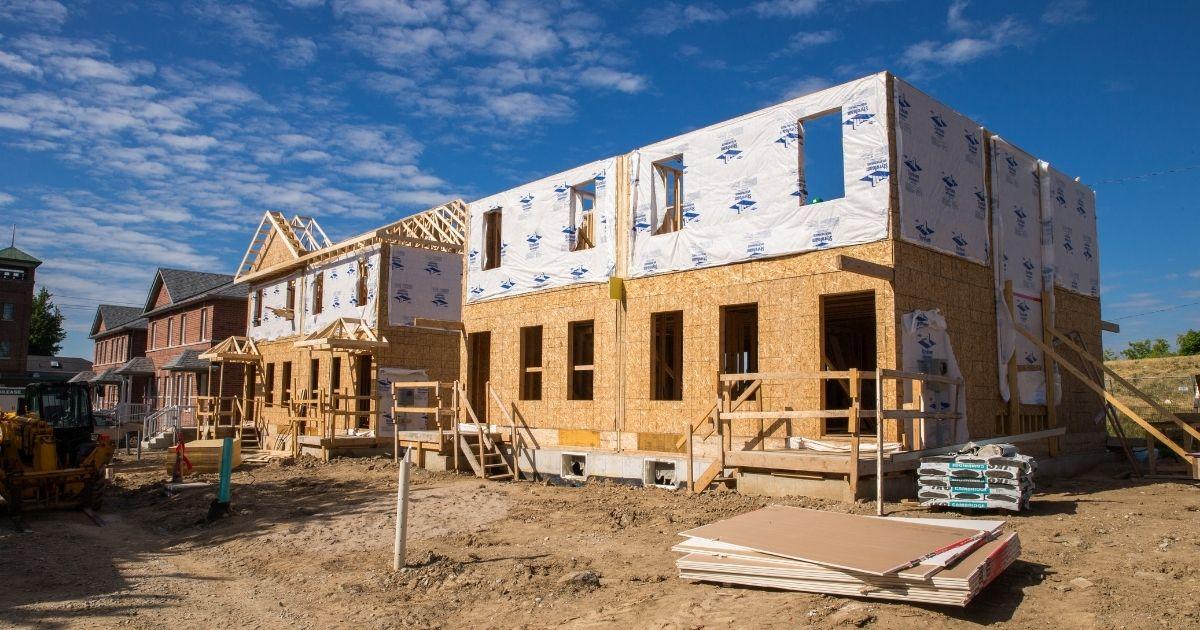The question of homes and housing affordability is relevant now more than ever. One organization looking to bring affordable homeownership to those who might otherwise not have access to safe and affordable housing is Habitat for Humanity.
Habitat for Humanity partners with working, low-income families to help them build strength, stability and independence through affordable homeownership. Families are not given free homes; instead, they pay an affordable mortgage geared to their income, as well as put in up to 500 volunteer hours with their local Habitat.
“This typically involves helping build their own home or the homes of others in the program, volunteering in their local Habitat ReStore, or taking classes in personal finance, home maintenance and other homeownership topics,” explains Sarah Anderson Austin, director of communications with Habitat for Humanity Canada.
Founded in 1976, Habitat for Humanity International has since grown to become a global non-profit working in more than 70 countries. Habitat came to Canada in 1985, and the country’s first Habitat home was built in Winkler, Manitoba. “Today, Habitat for Humanity Canada is a leading national non-profit, and there are 53 local Habitats working in every province and territory across the country,” Austin says.

She notes that one of the main changes in how Habitat serves families today is the continued advancement of a more intensive community design due to of rising land costs. “Over 50 percent of what Habitat builds across Canada today are multi-family/townhouses, ensuring we maximize our impact. Previously, the majority of Habitat homes built were single-family houses,” she says.
Construction of Habitat homes has become a challenge during the pandemic across the country. As a result of the pandemic, Habitat Canada’s Global Village program, an international volunteer program that sent over 1,200 Canadian volunteers last year to build on Habitat projects around the world and in Canada, has been suspended through to the end of 2020.
The pandemic also meant temporary closures of local Habitat ReStores—home and building supply stores that accept and resell quality new and used building materials, as well as furniture, appliances and home accessories. Winnipeg opened Habitat for Humanity’s first-ever ReStore in 1991. Today, there are over 110 Habitat ReStores across Canada and almost 1,000 worldwide, all raising funds to enable more families to partner with Habitat and access affordable homeownership. Proceeds from the stores help fund local Habitat operations and homebuilding in the community, so the closures have had a significant financial impact. Some of the stores have been able to adjust by going online, with others offering curbside pickup once it was safe to do so. “Since it began in March, the majority of ReStores have been able to open up again in at least some capacity and that’s great news,” Austin shares.
As for builds, Austin adds that while many of the homes that were planned to be built in 2020 have begun construction this year, “We expect home completions to be down by about 25 percent in 2020 as local Habitats adapt. This most often means managing a slower construction timeline with a reduced number of individuals on build sites in order to ensure they are following physical distancing and meeting all health and safety requirements.”
Sadly, one in eight Canadian households is in need of decent and affordable housing. “Many of those vulnerable populations are identified as key priority areas for action in the National Housing Strategy,” Austin explains. “Women and children fleeing domestic violence, Indigenous Peoples, racialized groups, recent immigrants and people with disabilities, to name a few.”
She shares that as part of Canada’s National Housing Co-Investment Fund, last year the federal government and the Canada Mortgage and Housing Corporation announced a $32.4-million commitment to Habitat for Humanity Canada. With this, hundreds of new homes will be built that meet energy-efficiency targets and will serve single mothers, Indigenous Peoples, people with disabilities, seniors and more.
Especially for Indigenous Peoples, housing conditions remain a serious problem, which is why the Indigenous Housing Partnership was developed in 2007. In fact, one in five Indigenous Peoples lived in a dwelling that was in need of major repairs in 2016. According to Austin, last year 24 Indigenous families moved into a Habitat home. And since the inception of the Indigenous Housing Partnership, 245 Indigenous families have accessed affordable homeownership. “We look forward to connecting and building with more Indigenous communities to help alleviate some of the severe housing issues facing Indigenous Peoples both on traditional territories and in urban areas,” Austin says.
The impact that homeownership has on families is immediate and the effects are ongoing. Habitat homeowners are being given more than just equity: With homeownership comes a renewed sense of pride and responsibility. The children of the Habitat homeowners excel in school and gain confidence. Research also shows that these homeowners become more financially stable, which positively affects their mental health and allows them to return to school, learn a new trade or upgrade their job skills.
“We know that there are far too many people across Canada and around the world that are in need of decent and affordable housing. Our goal, and that of each local Habitat across Canada, is to ensure that we remain strong so that we can continue building and providing more people with decent and affordable housing,” says Austin. “Investing in housing is investing in bricks and mortar but also in families and communities.”
*
PHOTO CREDITS:
20190805_140136: © Habitat for Humanity Canada
CANA-16-17008-EM: © Habitat for Humanity International/Ezra Millstein
An editor with 15-plus years in the publishing business, Catalina Margulis’ byline spans travel, food, decor, parenting, fashion, beauty, health and business. When she’s not chasing after her three young children, she can be found painting her home, taming her garden and baking muffins.













